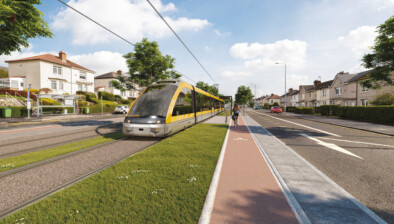Agreement reached on aim of three hour London to Scotland rail link
 Holyrood and Westminster have reached an agreement with the long-term aim of three-hour train journeys from London to Scottish cities.
Holyrood and Westminster have reached an agreement with the long-term aim of three-hour train journeys from London to Scottish cities.
The move coincides with the publication of the HS2 Ltd report on extending a faster rail service to the north of England and Scotland.
The two governments announced that work on evaluating options for the project would begin next year and that “implementation” of the plans could begin in 2019.
Robert Goodwill, the UK minister responsible for the second high-speed line (HS2), said: “Scotland will benefit from HS2 from the day it opens, with shorter journey times to London from the start.
“Once the full Y-Network opens, it will only take about three hours 38 minutes to reach London from Glasgow and Edinburgh. This report looks at ways we can build on these improvements and I thank HS2 Ltd for this work.
“Together with the Scottish government, we will be asking Network Rail to identify any options with a strong business case, for consideration for inclusion in future plans.”
Transform Scotland gave a broad welcome to the announcement of options for extending high-speed rail services to Scotland but said there is no need to wait for HS2 to start upgrades to the ‘classic’ network.
Colin Howden, director of Transform Scotland, said: “We have long campaigned for improvements to Anglo-Scottish rail routes to allow rail to capture market share from air and the car. We welcome the development of Anglo-Scottish high-speed rail so long as its objective is to reduce the unsustainable levels of short-haul flights between Central Scotland and London. As well as helping Scotland hit its climate targets, getting rid of many of these unnecessary domestic flights would help alleviate pressure on the over-stretched London airports.
“We believe that a combination of the HS2 project from London-Birmingham plus selective upgrades to the ‘classic’ network northwards can deliver three-hour journey times to Central Scotland using ‘classic-compatible’ trains. This would likely allow rail to capture a 50% share of trips.
“We have always held that the delivery of high-speed rail services to and from Scotland is not contingent on the construction of a new high-speed line across the whole route length from London to Scotland. Indeed, we believe that an insistence that a high-speed line be constructed for the whole route is likely to delay, not improve, the chances of high-speed rail services being delivered to Scotland at the earliest opportunity.”
Howden added: “With rail patronage booming, there is no need to wait for HS2 to start upgrades to the ‘classic’ network. Cut-offs are required as well as line speed improvements. More capacity must be created through the creation of longer passing loops and additional tracks. Within Scotland, we have consistently highlighted the need for action to address pinch points such as the 15mph speed restriction through Carstairs.
“It is also important to focus arrival points on city centre stations and so upgrades will be required on the approaches to Edinburgh Waverley and Glasgow Central. The stations themselves will need to be enlarged to take ‘classic-compatible’ trains as well as the ever-greater number of trains that current train operators aspire to run.”
The first phase of the high-speed line to the English midlands is due to open in 2026.
The “Y” network, extending the service to northern English cities, is scheduled for completion in 2033.















